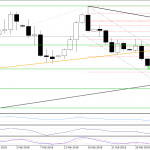Introduction
One of my favorite Warren Buffett quotes is “investing is most intelligent when it is most businesslike”. The reason this quote resonates so much with me is because I believe it represents the essence of value investing. To me, value investing is about positioning yourself as a shareholder/owner/partner in a wonderful business that you admire and want to partner with long-term. In the past, I referred to this as a business perspective investing. This is in stark contrast to trading stocks or playing the market.
Consequently, business perspective value investors are most concerned with the results the business is generating on their behalf. By this I mean the revenues (sales), profits (earnings), cash flows, and if any dividend production and growth, etc. In other words, the fundamentals and fundamental value of the business. Therefore, the business perspective value investor’s most important question is – how’s business? This is in stark contrast to the market player whose most important question is – how is the stock price behaving? In short, the business perspective value investor expects to be rewarded by their businesses operating performance instead of the less reliable and often fickle stock market behavior.
Nevertheless, even though most of us are small players investing in mammoth publicly traded companies, the principles of business ownership still apply. Personally, I believe the realization of the insignificant level of ownership that most individual investors have is what causes them to forget about the principles of business perspective investing and focus more on market action. Many investors find it a huge leap to think of themselves as owners or partners of Apple, Google, Johnson & Johnson, Home Depot, Walmart, 3M – or any other large publicly traded company. Yet, in truth and fact, if you buy stock in any of those companies you, as a shareholder, are also a partner and an owner. So, my advice is you should think like one.
The P/E Ratio Is Simply a Thermostat
Business perspective value investors utilize and think about valuation references such as the P/E ratio differently than stock market investors. Consequently, I want to be crystal clear that my following discussion of the P/E ratio is referencing utilizing the metric to ascertain a company’s intrinsic value/business value. This is in stark contrast to those who are thinking of P/E ratios as they relate to how the market may be treating a given company.
Once again, as I stated in part 1, these are the distinctions that Ben Graham was making with his famous short run voting machine, long run weighing machine metaphor. Market action P/E ratios are all about how people are voting based on a perception of value for a given common stock. Intrinsic value P/E ratios are focused on the weight or substance of the business relative to its fundamentals as described above. Therefore, all my following discussions are based on the weighing machine concept of the P/E ratio.
Importantly, this is precisely why valuation is not in the eyes of the beholder. That notion only applies to the voting or market action aspect of P/E ratios. To the business perspective value investor, the P/E ratio (as well as numerous other valuation metrics) are utilized as methods of measuring the intrinsic value of a company based on its production of earnings and cash flows, etc. Stated succinctly, the P/E ratio utilized by the business perspective value investor is simply a mathematical measurement (a thermostat) of what I will call owner’s yield. In other words, the P/E ratio is simply indicating the earnings yield that the company’s most recent profitability is providing them.
Earnings Yield the Inverse of The P/E Ratio
Earnings yield is simply the inverse of the P/E ratio. When you divide the company’s earnings by its price the result is the return that all the company’s earnings would provide you if they were all to be paid to you. These numbers are what a business perspective value investor sees in their mind’s eye when they note a company’s P/E ratio. The following table calculates the earnings yield of various P/E ratios:
P/E ratio 5 equals earnings yield of 20%
P/E ratio of 10 equals earnings yield of 10%
*P/E ratio of 15 equals earnings yield of 6.67%
P/E ratio of 20 equals earnings yield of 5.00%
P/E ratio of 25 equals earnings yield of 4.00 %
P/E ratio of 30 equals earnings yield of 3.33%
P/E ratio of 35 equals earnings yield of 2.86%
P/E ratio of 40 equals earnings yield of 2.5%
*the standard for most companies
Consequently, when a business perspective value investor sees a P/E ratio for a certain company, they never attempt to argue about or try to speculate about what it ought to be. Instead, they simply see it for what it is. Therefore, if that P/E ratio represents too low an earnings yield number, they are simply not interested in investing in that company. Also, they are unwilling to commit the necessary time and effort necessary for thoroughly researching the company as well. Moreover, they are focused on what the business can produce over speculating on what an emotionally driven market may or may not produce.
At the risk of being redundant, I want to be sure the reader understands what is being posited here. The business perspective value investor, like yours truly, is thinking about investing in a publicly traded company as if they were buying a private business in its entirety. Consequently, they are attempting to determine whether the business (not the market) provides them an adequate return on their invested capital. The P/E ratio then is a simple barometer or measuring device that allows them to quickly and easily determine if the company’s earnings power is compensating them for the risk they are taking.








Leave A Comment